iPhone 6 and iPhone 6 Plus: Preliminary Results
by Joshua Ho on September 22, 2014 7:07 AM EST- Posted in
- Smartphones
- Apple
- Mobile
- iOS
- iPhone 6
- iPhone 6 Plus
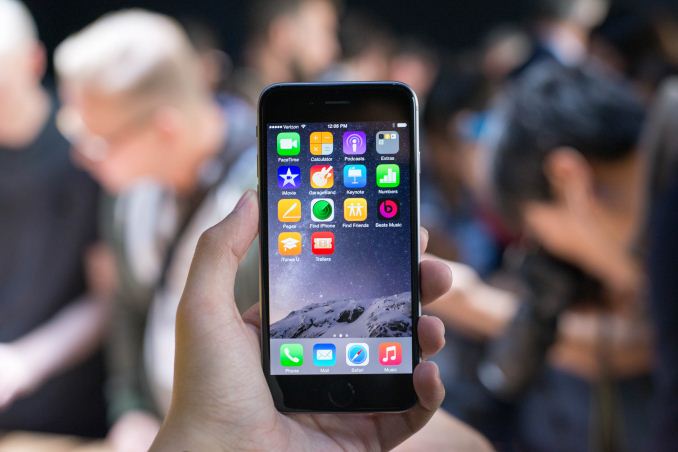
While we’re still working on the full review, I want to get out some preliminary results for the iPhone 6. For now, this means some basic performance data and battery life, which include browser benchmarks, game-type benchmarks, and our standard web browsing battery life test. There’s definitely a lot more to talk about for this phone, but this should give an idea of what to expect in the full review. To start, we'll look at the browser benchmarks, which can serve as a relatively useful proxy for CPU performance.
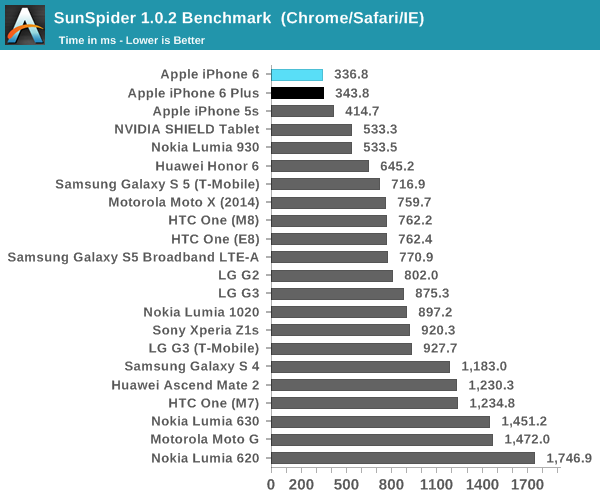
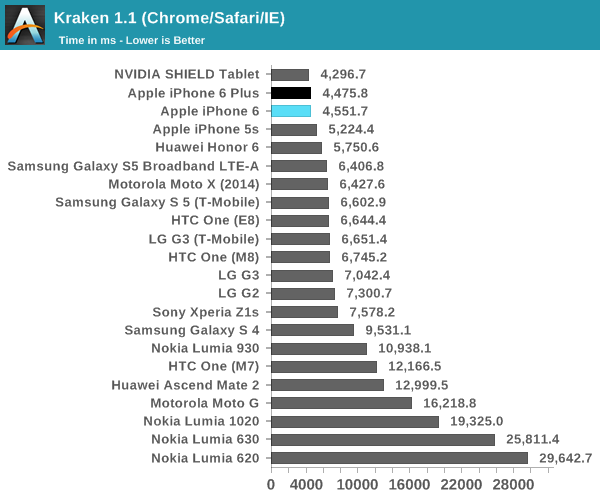
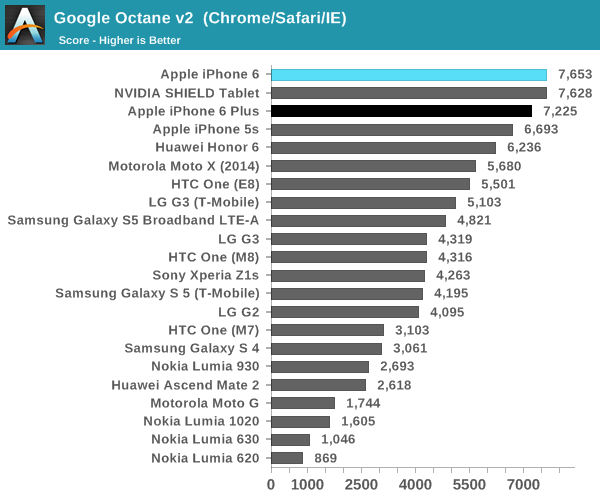
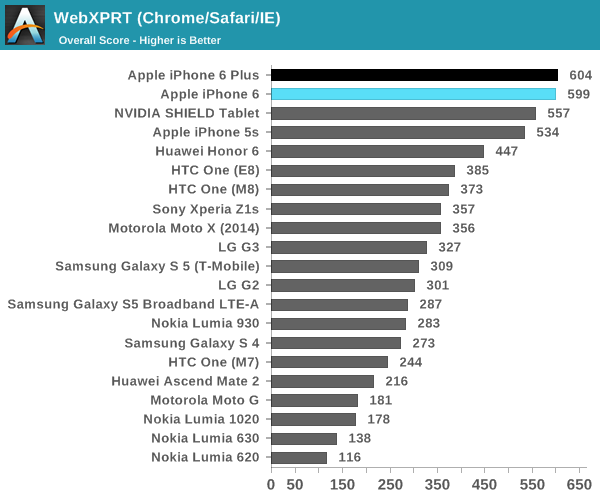
There are a few interesting observations here, as a great deal of the scaling is above what one would expect from the minor frequency bump when comparing A7 and A8. In SunSpider, we see about a 13% increase in performance that can't be explained by frequency increases alone. For Kraken, this change is around 7.5%, and we see a similar trend across the board for the rest of these tests. This points towards a relatively similar underlying architecture, although it's still too early to tell how much changes between the A7 and A8 CPU architectures. Next, we'll look at GPU performance in 3DMark and GFXBench, although we're still working on figuring out the exact GPU in A8.
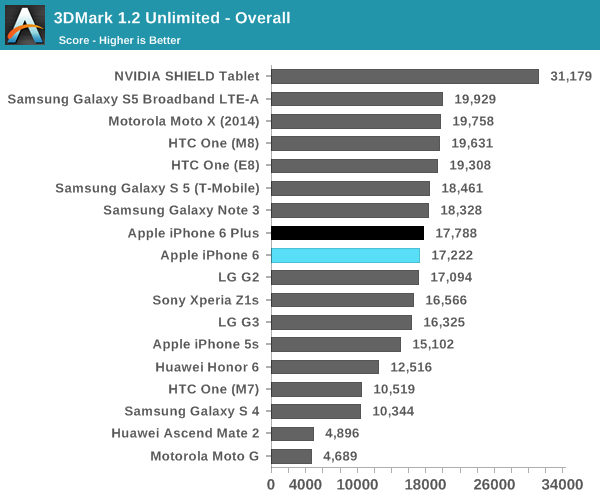
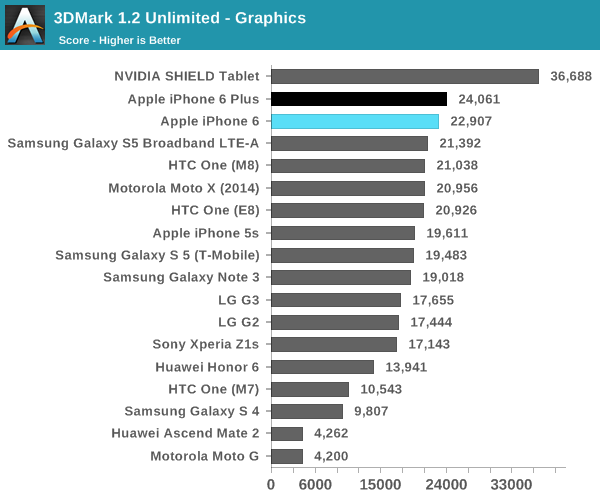
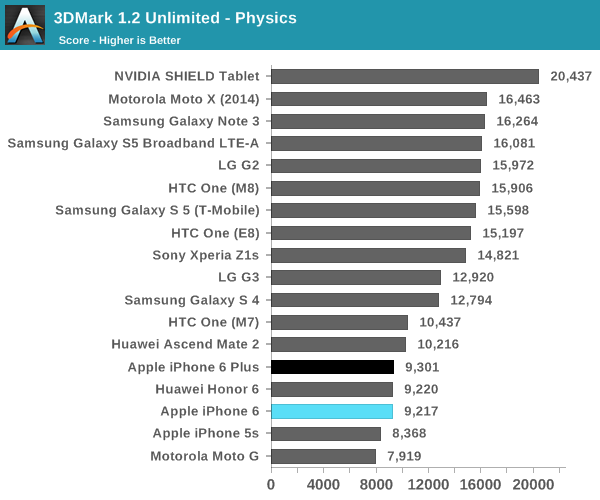
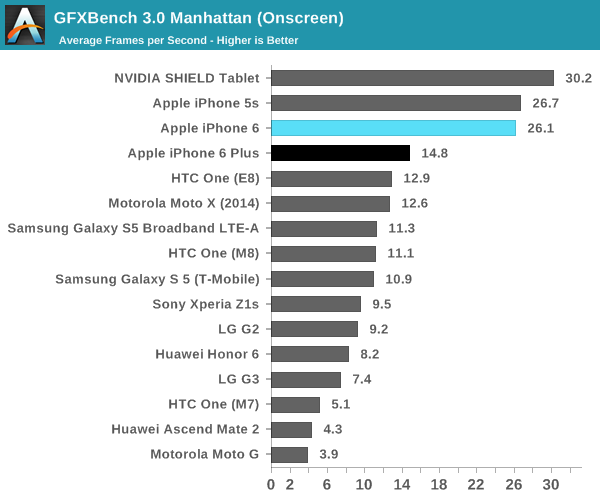
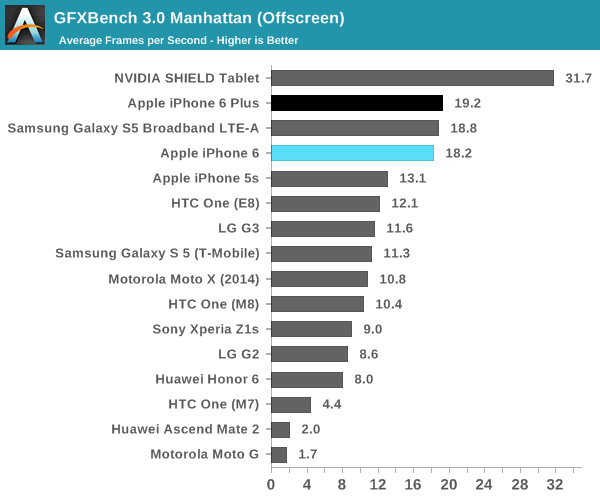
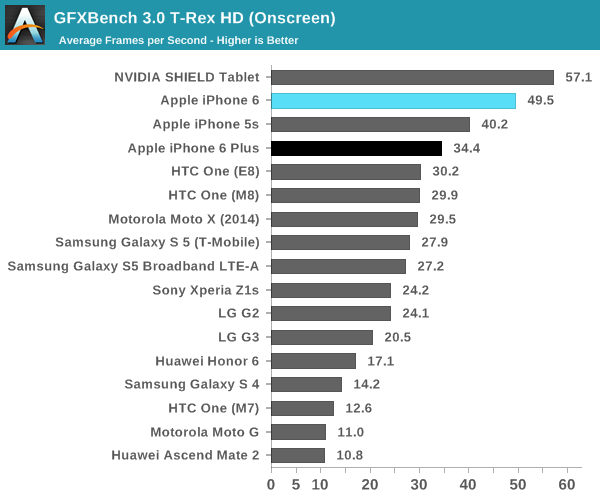
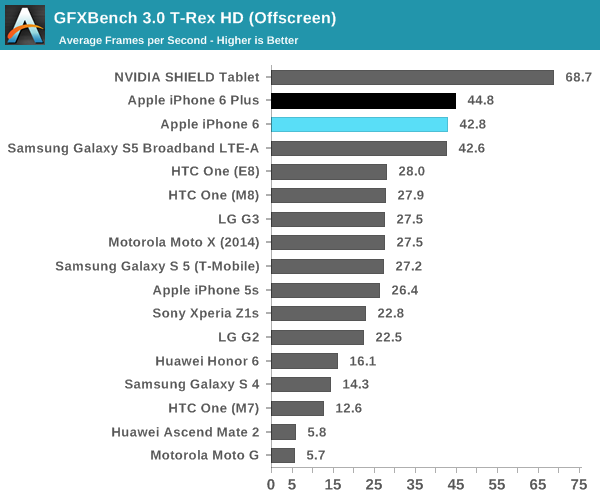
In in GPU benchmarks, we generally see a pretty solid lead over the competition for the iPhone 6/A8. It's seems quite clear that there is a significant impact to GPU performance in the iPhone 6 Plus due to the 2208x1242 resolution that all content is rendered at. It seems that this is necessary though, as the rendering system for iOS cannot easily adapt to arbitrary resolutions and display sizes. Before we wrap up this article though, I definitely need to address battery life. As with all of our battery life tests, we standardize on 200 nits and ensure that our workload in the web browsing test has a reasonable amount of time in all power states of an SoC.

As one can see, it seems that Apple has managed to do something quite incredible with battery life. Normally an 1810 mAh battery with 3.82V nominal voltage would be quite a poor performer, but the iPhone 6 is a step above just about every other Android smartphone on the market. The iPhone 6 Plus also has a strong showing, although not quite delivering outrageous levels of battery life the way the Ascend Mate 2 does. That's it for now, but the full review should be coming in the near future.










316 Comments
View All Comments
akmittal - Monday, September 22, 2014 - link
I always wonder how Apple SoC with dual core processor and 1GB can top quad core snapdragon quad core with 2 GB of RAM.juicytuna - Monday, September 22, 2014 - link
Dual 6 wide cores optimized for high per thread performance versus many 2/3 wide cores optimized for throughput.And amount of RAM has little relevance in the benchmarks posted above.
It's not rocket science.
blackcrayon - Monday, September 22, 2014 - link
2 comparatively fast cores can be faster than 4 comparatively slow cores. And the RAM doesn't matter as long as whatever job you're doing doesn't require more than you have.bobfromguam - Monday, September 22, 2014 - link
No test is perfect. However I really like this test as it shows what a realistic interaction of the phone would be. To say that the new iPhone is archaic or antiquated is amiss. The phone by most modern standards will be a good experience and apples continued improvements will be a boon to its users. KAI-ZENuncclewis - Monday, September 22, 2014 - link
I think something is wrong with the iphone 6+ benchmark. I downloaded the gfx app and ran the manhattan on screen on my iphone 6+ and I got a score of 31.2 fps. But the app was crashing a lot. I think the app needs to be updated to provide an accurate measurement!uncclewis - Monday, September 22, 2014 - link
Oh wait. I think that score is for the 1136x640 resolution. I see you increased it in the corporate settings. Nevermind!Sushisamurai - Monday, September 22, 2014 - link
FINALLY... i've been checking this for days like an OCDkcvpr - Monday, September 22, 2014 - link
I'm still surprised at how dense people are over hardware specs.
It's a comparable concept to cars. You could have 1,000hp in a car, but if it weighs 10,000lbs it's not going to perform as well as a car with a 1/4 of the weight and half the power.
Another example with cars, you could have two cars with exactly the same specs and weight. But one is 4 wheel drive and one is 2 wheel drive. The 2 wheel drive version will be faster, because of higher efficiency in the delivery of power. Which is comparable to this situation, in that apple designs their software and hardware together to boost efficiency. Most times android phones just don't have the luxury of doing this, so they have to take a premade software package and adapt it their hardware after the software has already been designed. Which leads to the need for higher specs to get the same level of performance.
Common sense (or maybe I should call it uncommon sense?).
tuxRoller - Monday, September 22, 2014 - link
Yeah, I'm not sure you're right at all. I know that this has been the "common sense" view, but I don't think the evidence supports that conclusion.In particular, when you normalize for screensize, battery, and process node you typically see similar results (for battery----third party apps vary in quality far too much to make useful comparisons).
In this case, apple has beaten everyone to a completely new node, so I'd certainly hope they have a lead over everyone else (save that one huawei device I'd never heard of).
IMHO, where "controlling" the hardware/software comes in most handy is performance of drivers. Apple+Imgtec have, hands down, the best drivers around.
frickingphil - Monday, September 22, 2014 - link
"The 2 wheel drive version will be faster, because of higher efficiency in the delivery of power."Not if the 2WD car can't get its power to the ground and it just sits there spinning tires all day.
Apple's integration would be like the manufacturer of the performance car cherry-picking the (or designing their own) grippiest tires for the car, implementing an amazing traction and launch control system, and their own designed dual-clutch gearbox.
The Android implementation would be a bigass twin-turbo LS motor making 1500hp on an average platform running regular tires with no traction control and a manual gearbox. It'll just spin through 4th gear.
It's vastly more powerful in terms of raw output, sure, but the chassis can't utilize the power for any useful work.
BTW when it comes to higher powered cars, it's more efficient to put power down through 4WD than 2WD...cuz you have twice the amount of rubber applying tractive force to the road, despite the inherent drivetrain efficiency losses. A more efficient drivetrain doesn't do jack squat if your tires are melting.